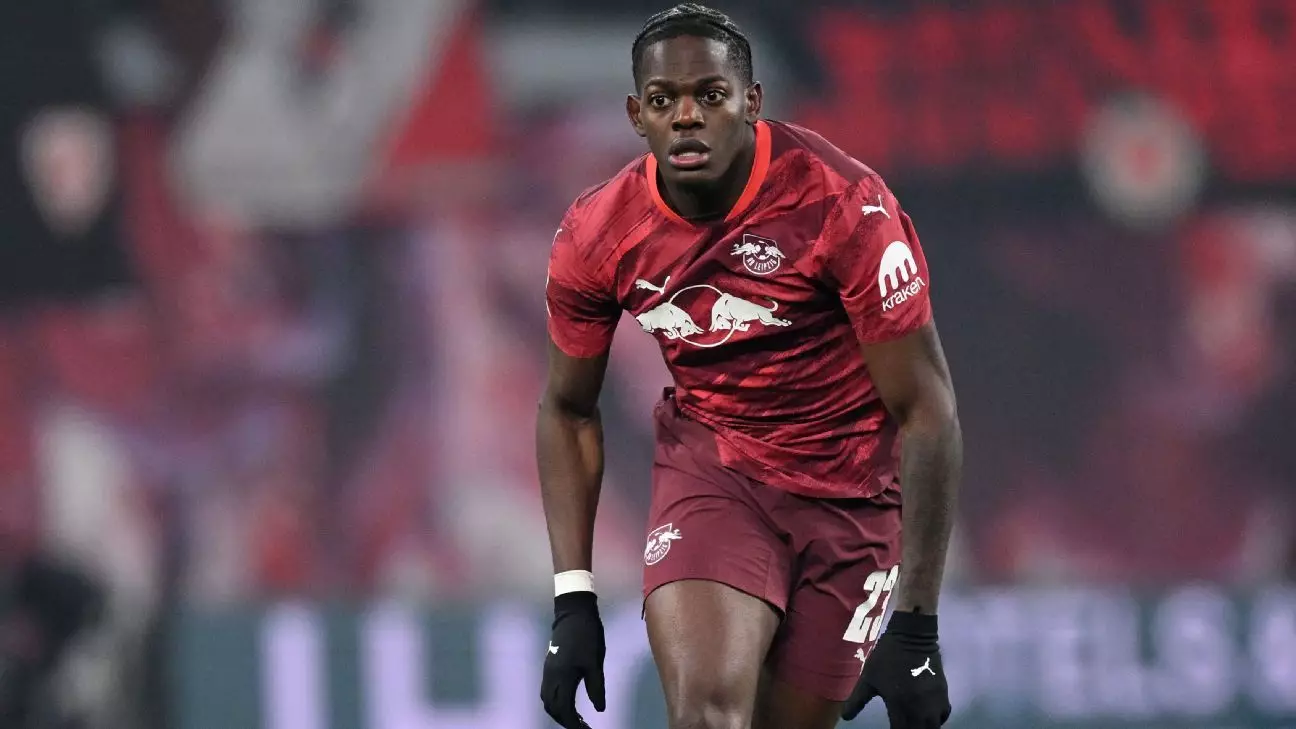The world of football is characterized by constant evolution and strategic maneuvering, particularly during transfer windows. In recent reports, clubs like Chelsea and Manchester United have set their sights on RB Leipzig’s promising defender Castello Lukeba, while Real Madrid appears to be intensifying its efforts to lure Liverpool’s Trent Alexander-Arnold. As the excitement grows with the prospect of high-profile moves, let us delve deeper into the current transfer landscape, exploring the potential implications and motivations behind these burgeoning interests.
At just 22 years old, Castello Lukeba’s career trajectory is already remarkable. After transferring to RB Leipzig in 2023 for a substantial €34 million, he now finds himself on the radar of several elite clubs, with a staggering release clause set at €90 million. Despite a season marred by injuries, his talent and potential have not gone unnoticed; major teams including Chelsea and Manchester United are eager to secure his services.
However, the decision to break the bank for a player plagued by injuries raises questions about the wisdom of such an investment. Clubs are not just acquiring a player; they are tying their financial future to a talent with demonstrated risk factors. An analysis of Lukeba’s performance metrics would provide a better understanding of whether his skill set justifies the financial gamble, especially when alternatives might offer a lower price or a more stable injury record.
In another significant saga, Real Madrid’s desire to acquire Trent Alexander-Arnold from Liverpool has sparked a vibrant discussion among fans and analysts alike. The Telegraph suggests an “all-or-nothing” approach to securing the 26-year-old. Real Madrid is known for its bold ambitions and high stakes; moving to acquire a talent like Alexander-Arnold aligns neatly with their strategy of seeking top-tier players who can elevate the squad’s overall performance.
What might this mean for Alexander-Arnold’s legacy at Liverpool? He is seen as an icon at Anfield, and any potential departure would not only reshuffle the club’s defensive setup but would also leave a gaping hole in its fanbase’s affection. If Madrid’s tactics succeed, it may trigger both excitement and anxiety among Liverpool supporters as club legends transition, reflecting the harsh realities of football’s transactional nature.
Transfer rumors are often a volatile currency in football discourse. As Chelsea and Bayern Munich set their sights on Borussia Dortmund’s Jamie Gittens, who has undeniably made waves since leaving Manchester City, the significance of resigned contracts and market valuations comes into focus. The €80 million price tag illustrates the precarious balance between a player’s market performance and their intrinsic value to a club’s future prospects.
Dortmund has become a proving ground for young talent, pushing clubs to rethink their acquisition strategies. For instance, past examples involving players like Jadon Sancho and Jude Bellingham come to mind, wherein players have departed for significant sums, only to excel elsewhere. This repeated pattern raises critical questions: Will clubs be willing to invest heavily in developing talent, or will they seek to exploit Dortmund’s model and cherry-pick next-gen stars at inflated prices?
Notable developments from the Saudi Pro League demonstrate how foreign clubs are reshaping the global football landscape. The reported interest in Liverpool’s Mohamed Salah by Al Hilal indicates a proactive strategy to attract established talent. With a lucrative contract offer positioned for Salah, we see a concerted effort by Saudi clubs to reclaim relevance and prestige in the global arena.
Al Hilal’s approaches bring to light the growing temptations athletes face when money becomes a significant factor in career decisions. The diverging paths of clubs and leagues raise intriguing discussions around loyalty and ambition. For Salah, staying at Liverpool could solidify his status as a club legend, while the allure of financial security could tempt him to embrace a new adventure, impacting both his career trajectory and the perception of Saudi football on the global stage.
With all these potential transfers buzzing in the air, the landscape of world football appears increasingly driven by financial opportunism and competitive ambition. The pursuit of standout players highlights the complexities and contradictions inherent in the sport today. For clubs, it is a game of chess, where every move counts, and long-term impacts remain uncertain. For fans, the anticipation of seeing new talent grace their clubs is thrilling, but it comes with the reality of constant change and potential heartbreak.
As we reflect on the latest transfer developments, the question remains: How do clubs balance ambition with prudence in a world where every decision can reshape legacies? The answers may not only dictate the success of individual clubs but could very well define the future of football itself.

